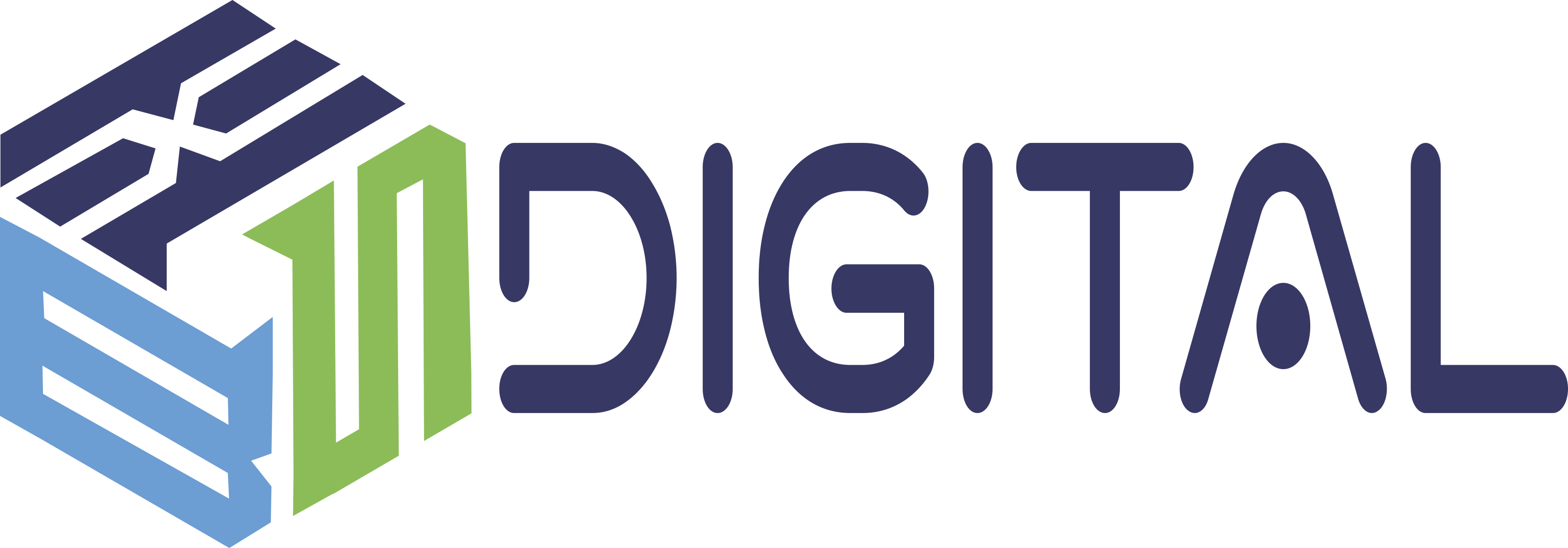
by docdocgoose0 | Aug 7, 2023 | Client Profile
Lyon County Sheriff’s Office
13 Employees | 1 Location | Law Enforcement/Local Government
Services Used
• Office Solutions: Printers, Copiers, Fax
• Custom Software Application
The Problem
The Lyon County Sheriff’s office came to doc doc goose in need of a professional storage system for photography related investigations. Prior to this project’s implementation, their sworn personnel had an arduous process of cataloging evidentiary photographs. A deputy would take photos at the scene of an incident, crime, or accident. The deputy would then return to the office, save the photographs to their desktop, and transfer or burn them to a CD-R before physically attaching them to a case or collision investigative file. This took considerable time and left room for human error, not to mention the added cost of CD-Rs and envelopes.
The Solution
doc doc goose provided an easy-to-use Nexus software application to store digital photographs and catalog information. They worked with XBS Office Solutions to develop a photographic evidence control function, which simplifies the process for storing and retrieving agency photographs. The end product allows deputies and officers to upload their photographs directly from crime and accident scenes in the field via their issued cellular phones and receive immediate confirmation they have been successfully uploaded to cloud storage while simultaneously notifying a supervisor. This solution saves time and money; both of which are precious commodities in law enforcement work today.
“Our experience with DDG has been fantastic. The company representatives, along with the technical expertise has made this a pleasant and worthwhile experience. Each representative listened to the needs of our agency and tailored the product in ways which made this a very simple, yet effective and professional platform. They understood the goals we needed to accomplish. Most of all, they exhibited patience as we worked through the edits and adjustments requested to make this a simple but efficient platform.”
Brent White
Sheriff, Lyon County Sheriff’s Office
This project was completed in partnership with XBS Office Solutions

by docdocgoose0 | Jun 15, 2020 | Automation
I can always tell when my boss is working on a spreadsheet – you can see the frustration on his face.
I’ve asked him why we haven’t switched to a more advanced and easier to navigate system. He’s always claimed that spreadsheets are easier to work with than more complex models and they are less expensive, too.
But do spreadsheets provide us with all of the amenities of other modes of data organization? Can you keep all your information in one place? Integrate your communications within your spreadsheet? Or create a standardized sales process?
No, you really can’t. Here’s why spreadsheets are moving on out:
Working in them is a hassle.
You have to keep multiple sheets for different tasks. Searching for data through exhaustive spreadsheets takes time away from other important tasks. Your team is busy doing manual work, which can easily be automated with any CRM. Do you spend time washing dishes by hand if you have a dishwasher available to you?
They’re missing features. 
A spreadsheet is just an organizing tool. It doesn’t offer additional features, such as integrating your email and calendar. Spreadsheets are a separate record you have to maintain by hand.
This can impact sales, customer relationships, and time management. Why use different tools to keep track of multiple things when you can use one?
They don’t show data trends.
Because you have to manually create sales reports to analyze sales and other metrics you might be missing key information. When a program collects and analyzes the data for you it can help you see patterns or areas for improvement you may not have noticed. You can find a new key ingredient to sales success.
They’re don’t allow for easy collaboration.
Spreadsheets don’t offer an opportunity for your team to collaborate. It’s a static document that lives on one person’s computer. With a model that multiple people can access and contribute to, you can get your whole team on board with keeping up with your company data and impacting your business positively.
They aren’t a scalable solution.
As your business grows, so will your need for staff to keep up with your spreadsheets. More data, metrics, and customer connections means a growing number of hours spent on maintaining the information you put into your spreadsheets. An organizational model that can grow with your business will save you time and money and a one time investment in a CRM will be more profitable than hiring additional staff.
Many businesses and organizations are shifting toward a more advanced and efficient data management system and you can too. Tomorrow isn’t too early to find the right CRM for your business and break free from the tedious spreadsheet.

by docdocgoose0 | May 1, 2020 | Automation
Talk to any software developer today, and within minutes, he or she will bring Artificial Intelligence or Machine Learning into the conversation.
The world is quickly adapting to automation, however, there’s still a sector that remains untouched by automation: leadership. Why is it important for leaders to learn about and embrace automation? Let’s take a look.
Spread of Automation
Deep learning is rising at an exponential pace, and its impact can be seen in our daily routine. From facial recognition to home automation, it is gradually becoming an integral part of our life. The main aim of automation is to create an efficient work system.
Automation at Work 
Large scale industries have already used automation in assembly lines for a long time. The move toward automation has drastically reduced the manpower required for bulk production.
In the office, we have AI-based service robots to reduce our manual work. Robotic Process Automation (RPA) is replacing the high-volume repeated tasks to cut down the laborious work like calculation and record maintenance.
Impact on the Workplace
Since automation is replacing the tasks we’re used to doing ourselves, what are the workers going to do now? Even though the need for workers to complete repetitive tasks has been reduced in every sector due to automation, there’s still plenty of work to be done. Now, your team can pivot their focus to tasks that machines cannot complete, those that require creativity, people skills, and collaboration.
The Leader’s Role
Leadership plays a significant role in determining what is most important in a working environment, and it’s their responsibility to decide how to incorporate automation into the day to day work of their company and team. Leadership teams will have the opportunity to re-evaluate how to allocate the extra time that becomes available when repetitive administrative tasks can be automated.
Leadership should focus on creating a culture of development and learning, where staff can be fluid and flexible with the introduction of automation. Team members can be assigned to supervise automated tasks for accuracy or analyze them for efficiency. Additionally, this is a great opportunity for your team to work together to determine how automation fits into their day to day work and how they want to spend their extra time. Leaders can prioritize motivation, empathy, and collaboration during this time.
Leadership needs to embrace the creative side of their team to keep work fulfilling. Creativity is something that’s uniquely a human skill and can never be automated.
Failure to Adapt
Failing to accommodate the incoming advancements in technology can directly impact productivity. The team may lose enthusiasm with continuous monotonous work, and sticking to old methods and processes will never cut down the operational costs. New technology aims at increasing efficiency and reducing spending, so leaders who don’t embrace it are missing out on an opportunity for savings.
Automation will change things in your business and it takes human work to figure out where it fits into your team. Leaders should take these changes as an opportunity to not only improve efficiency but also to find out what else their team can add to their business when automation is taking care of the busywork.

by docdocgoose0 | Apr 30, 2020 | Decision-making
Today we have five generations that make up our population. Because these generations have different experiences, they have different ways of analyzing situations and making decisions.
Generational differences can have a big impact when making purchasing decisions. Take a look at how one family approaches buying a new car to see this in action:
Grandfather, the Silent Generation
This is David. Tradition is important to him and he makes decisions based on past experiences or advice of trusted friends and family. He appreciates a company with a long history of quality and customer satisfaction.
You can influence his decision to become your customer by providing good service and showing that customers trust your company.
Father, the Baby Boomer
This is Adam. He is focused on making the right decision for his family, and product quality and value for money are most important to him. David does thorough research (primarily offline and some online) before buying.
To help him feel confident in purchasing from you, tell him why your car is the best among others by pointing out the additional features, such as safety or an efficient gas mileage that might be lacking in other cars. He will appreciate the opportunity to try the car out for himself through a test drive or demonstration.
Son, the Gen Xer
This is Jason. He researches extensively online using search engines, social media, and online reviews. Quality is most important to him and he wants to know he’s buying the best. Adam compares brands before buying to make sure he’s making the right choice.
Help your brand stand out by having an active online presence along with offline showroom outreach to help Jason feel confident in purchasing from you.
Daughter, the Millennial 
This is Rachel. She appreciates the convenience and information available when online shopping. For her, positive online customer testimonials are a more trusted way of knowing the product. She’s tech-savvy and will look for more advanced features.
Be active in your customer reviews, respond thanking customers for feedback, and show on your website how you’re applying it. Using advanced technology such as AR/VR for showcasing your car will show Rachel how you stand out from your competitors.
Granddaughter, Gen Z
This is Emma. She’s the youngest prospect and may not be a direct decision-maker, but she could be an important stakeholder. She appreciates how social media can clue her into trends and provide information on first-hand customer experiences.
Show Emma how you stand out from the crowd through a stellar social media presence. Partner with trusted influencers and engage with customers on all popular social media platforms.
Use this information to create an impactful presence online or in your local community. When you know what the buying process looks like for each generation you can better tailor the experience to your customer. Different customers will want individualized experiences, but one thing is common among all the generations: the importance of great customer service.

by docdocgoose0 | Apr 15, 2020 | Remote Work
Developments in technology have changed the way organizations work today. Tools like video calls and project management software have decentralized the workplace. Now, team members can be located in different time zones or sitting at their kitchen table and still be doing work together.
Maintaining a remote team requires more than just sending out a video conference invite. Teams need consistent communication, support and a positive team culture to stay engaged. How can this be achieved?
Here are our top eight tips
1. Establish Strong Brand Values
Values help your team feel personally connected to the work they do. Having clear brand values helps your team know how to approach their work in service of your company goals.
2. Communicate, Communicate, Communicate
This is pretty obvious, right? Without a physical work environment, the daily communication of an office can fall by the wayside. Research available platforms for remote communication and choose the one that best fits the needs of your team. Consider polling your team to see what features would be most important to them.
3. But Don’t Micromanage
Having regular communication is good, but once you’ve set your expectations and assigned the work, stick to pre-scheduled touch bases to check in on progress. Show your team you trust them to accomplish their tasks.
4. Manage Your Time
Remote work requires sincere collaboration from each team member. Otherwise, the project may never get completed. An efficient project management platform is a must for remote teams to share their work. Ensure that the goals are updated regularly with a clear timeline. Having regular touch bases is a very effective way of getting updated info from your team. You can even get your team sharing their top tips for time management with each other!
5. Nurture Your Culture
Your team is full of valuable resources. Instead of falling into group-think, consider what each individual can add to your group. When working remotely we can all get a little stuck in our individual routines, so take some time to brainstorm together and talk through new ideas.
6. Have a Little Fun
Set time aside for optional team hangouts. A weekly virtual happy hour where team members can laugh, share, and say hello to each other’s kids and pets can be a great way to stay connected as a team and decompress.
7. Don’t Forget their Faces
Giving a face to a voice or written message creates stronger team connections. Text conversations may not always convey the exact message and may often be misinterpreted. Give video platforms a try as much as possible!
8. Give Kudos
Whether a centralized office team or a remote team, positive feedback is essential. Thank your team for their hard work and encourage them to thank each other. Setting up monthly calls to celebrate accomplishments is a great way to do this! Give yourself some kudos, too. Make sure you’re also recognizing your hard work.
With the right tools and a fluid and flexible team that values collaboration, creating a positive and efficient remote working environment is totally within reach. Keep these tips in mind for a smooth transition into a virtual office space.










